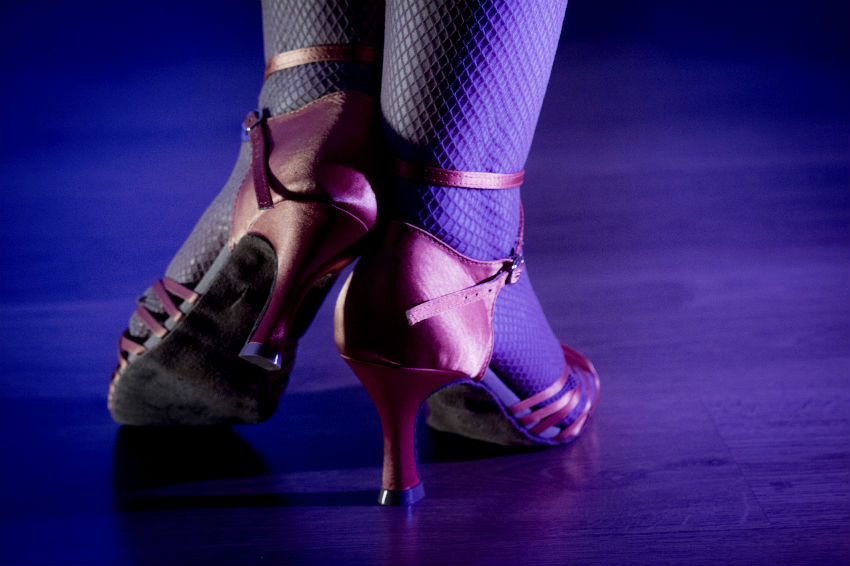If you’re a female salsa dancer who’s been around (the dance floor, that is), there will come a time when you’ll be asked to lead. It’s just mathematics. In many classes (especially beginner), there are sometimes a lot more women than men. As a skilled dancer who might be “top of the class,” an instructor may ask you to lead some of the beginner women because it’s a challenge for both of you! However, fair warning: Learning to lead as a female dancer can be much more difficult than learning to lead as a man new to salsa dancing. The reason? You’ve already learned how to follow and it’s much tougher to un-learn skills, even temporarily, than to start building brand new ones with no previous “bad habits.”
Perhaps calling them bad habits sounds unfair, but as a lead salsa dancer, that’s exactly what it is. Women in salsa dancing are, by design, the more passive dancers. A good follower not only “lets” the leader lead, but also learns how to read each lead’s body language and cues to predict their next move. As a lead, you’re in charge and it’s probably the first time you’ve had to move a partner across the dance floor. It can feel awkward, intimidating and a little embarrassing—but it shouldn’t. Knowing the basics of being a lead before you take on this challenge can help you and your partner feel more comfortable and achieve a successful dance.
Forget (Almost) Everything You Know
In cheerleading, “bases” make the best alternate “fliers” when necessary because they know what feels good to them. For example, the base (a person who’s on the bottom of stunts and pyramids) knows that it feels best when the flier (the person on top of stunts or who gets tossed in the air) keeps their knees slightly bent and stays “springy” so they don’t feel like dead weight. If a base needs to temporarily act as a flier, they’re usually surprisingly good at it because they’ve had so much practice in exactly what the base needs. It doesn’t matter that they weigh more than the average flier. The same applies to salsa dancing.
As a normal follower, you already know what a good lead does. They take charge yet are gentle, giving you plenty of cues (many times verbal when the follower is a beginner) as to what they’re going to do next. For example, making confident and sure, well-paced movements, providing a steady flat-faced palm for turns, and maintaining the right amount of eye contact (not too little, not too much) are all crucial.
Fast Tips for New Leads
Any partner dance has established rules, but as a new lead your new rules might seem overwhelming. Salsa dancing takes teamwork and communication, as well as plenty of sensitivity. Your main connection, or line of communication, is through the hands and fingers. As the lead, it’s your job to facilitate that communication with a steady hooking of the hands at the upper joints, taking care not to bend the follower’s wrists upwards. Leads should keep wrists straight, letting the follower gently push your hand downward to keep the connection taut.
A lead also moves the followers entire body, which means it’s your responsibility to hold the “frame.” It’s a lot more challenging than many women realize, and you’ll have a new respect for your fellow male leads! You can’t be stiff and rigid, but you do need the perfect amount of slack to keep proper stance for both you and your follower. Achieving constant stability in your core is a serious workout, and you’ll probably find yourself tired quicker than when you’re a follower. Keeping your arms (including the elbows!) in front of your body and in a correct frame to help your follower “listen” to your body’s communication is an entirely new kind of stamina workout on the dance floor you’ve never tried before.
The Leading Trifecta
There are three key aspects of salsa for a lead. First, you have to give signals (perhaps a firm but gentle push or pull) that tells the follower you’re changing directions. Next, the follower must answer your signal. She does so by doing the same thing as you, the leader. Bear in mind that if your follower is new (or even if she’s not, since this is your first time leading), followers don’t always answer correctly or at all. Don’t get frustrated or think she’s “not listening.” Remember, dancing is a two-way communication. The third aspect is the actual movement, when you’re both in harmony and “talking” on the dance floor.
Just like when you began salsa dancing as a follow, the only real way to improve is with practice. If you want to learn to be a better leader, focus on leading from your center. It’s natural to try to lead with your arms and hands, but it not only looks awkward but is also nearly impossible for anyone to follow. Don’t be too forceful, and don’t lead too suddenly. Your follower needs some gradual buildup. However, there is one benefit to being a female lead that you already have in the bag: You understand the follower’s perspective. You’ve been in her shoes, so empathy gives you a little edge over your fellow male leads.
There are many reasons you may want to start practicing to become a female lead. Maybe you want to open your own dance studio or offer lessons at a local Latin club. Being able to teach both leaders and followers is critical for any instructor. As a woman, you’re also in a better position than a man to “play on both teams.” It can be a little funny to other women when you lead them, but they’ll usually get over the giggles quickly. If a man is teaching to both lead and follow, it can be a little more awkward for some men to dance (and learn to lead) a male partner, even if that male partner is an instructor with years of experience.
Good luck, ladies, and remember—practice is key!


Leave A Reply